Google Pixel 5 vs Google Pixel 4
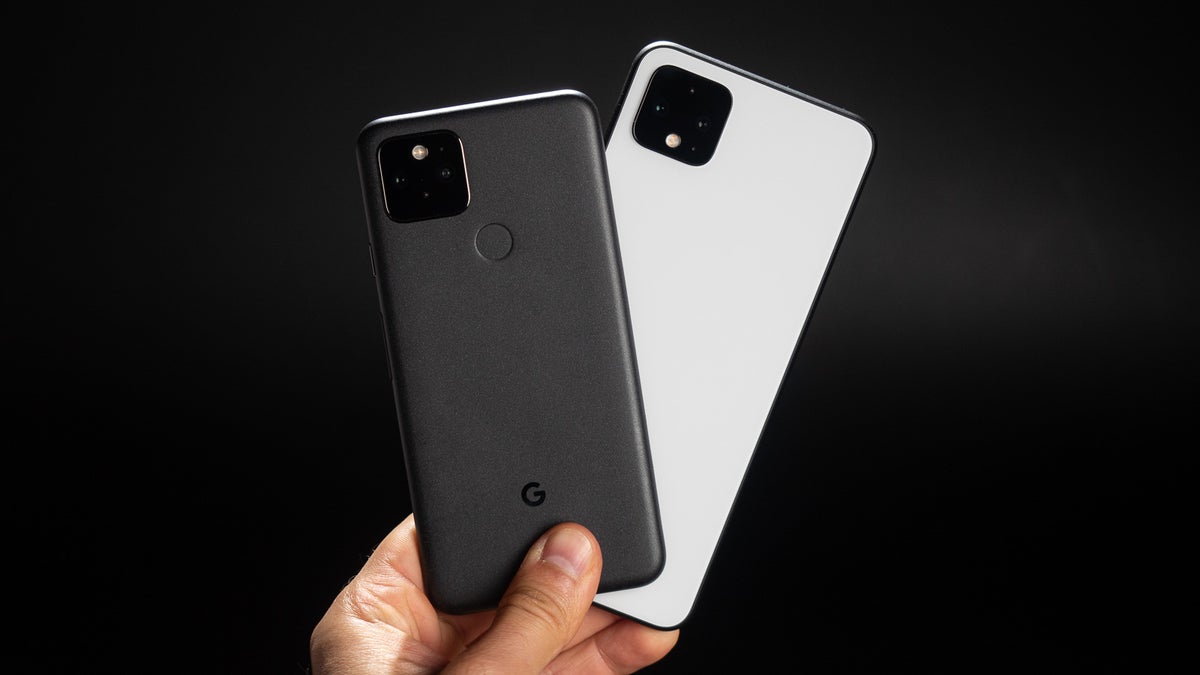
Google has a new Android showoff machine in store for us. Also known as Pixel 5, the company’s latest flagship was just announced alongside the Pixel 4a 5G. The new Pixel is once again the dream phone for the Android purists but not so much for the performance junkies. Google has a new strategy for its phone line and it doesn’t include the best possible chip. Is the change the right move for Google? Time will tell.
You might also like to read:
Now, however, we’re going to take a look at how the new Pixel 5 and last year’s Pixel 4 compare. Beginning with...
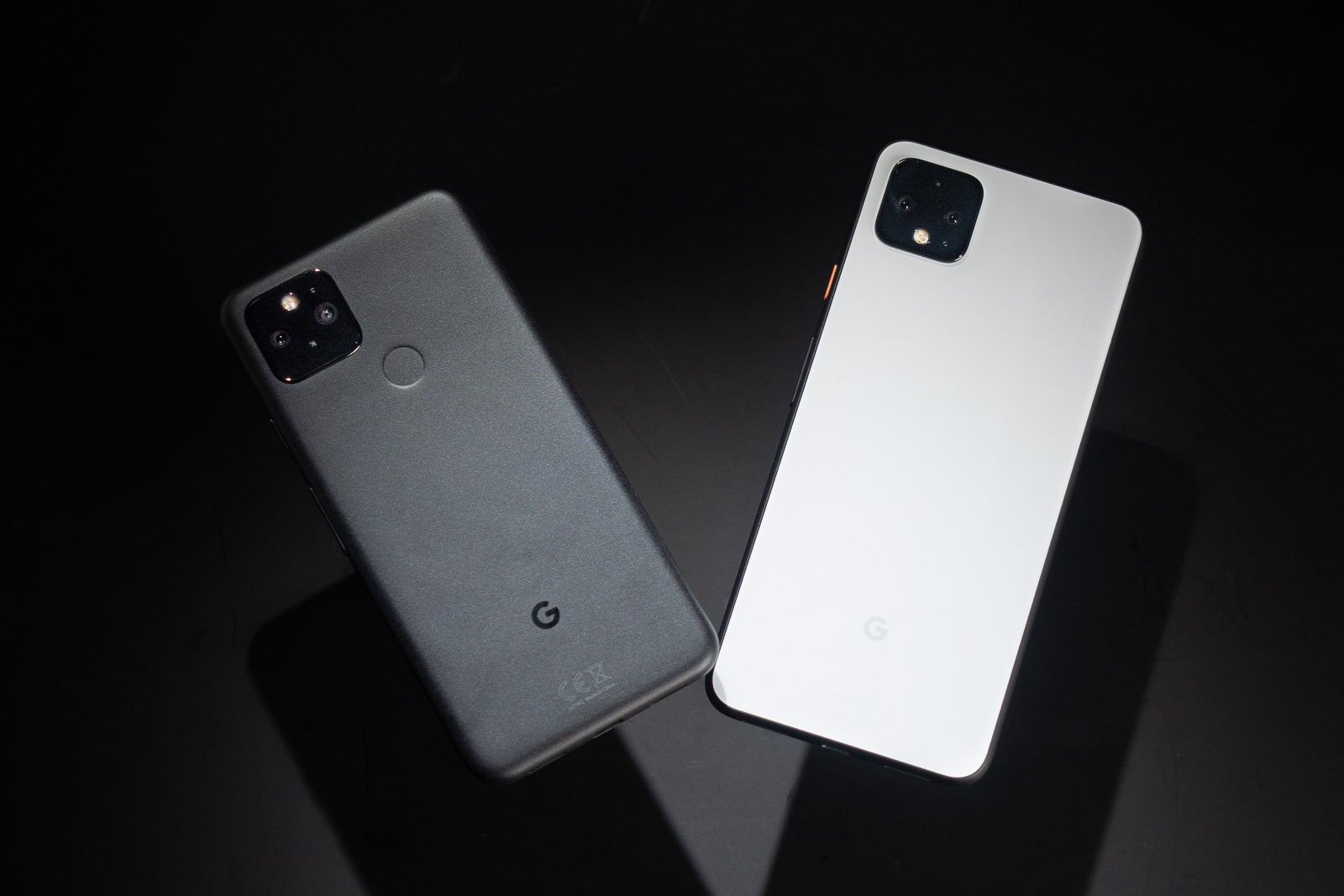
Google’s design is unique in its simplicity. Straying away from shiny finishes and colors with whimsical names, the Pixel phones have had an understated look since day one. The biggest sign of extravagance is usually the colored power button and that says a lot.
From what we know so far, the biggest difference between the two phones is at the front. The display of the Pixel 5 finally stretches all the way to the top of the device with a small hole for the front-facing camera tucked in the corner. Some users prefer the punch hole to be in the center, others in the corner, we can’t say for sure which is best. The important part is that the screen-to-body ratio is significantly improved and the Pixel 5 looks like it belongs in 2020.
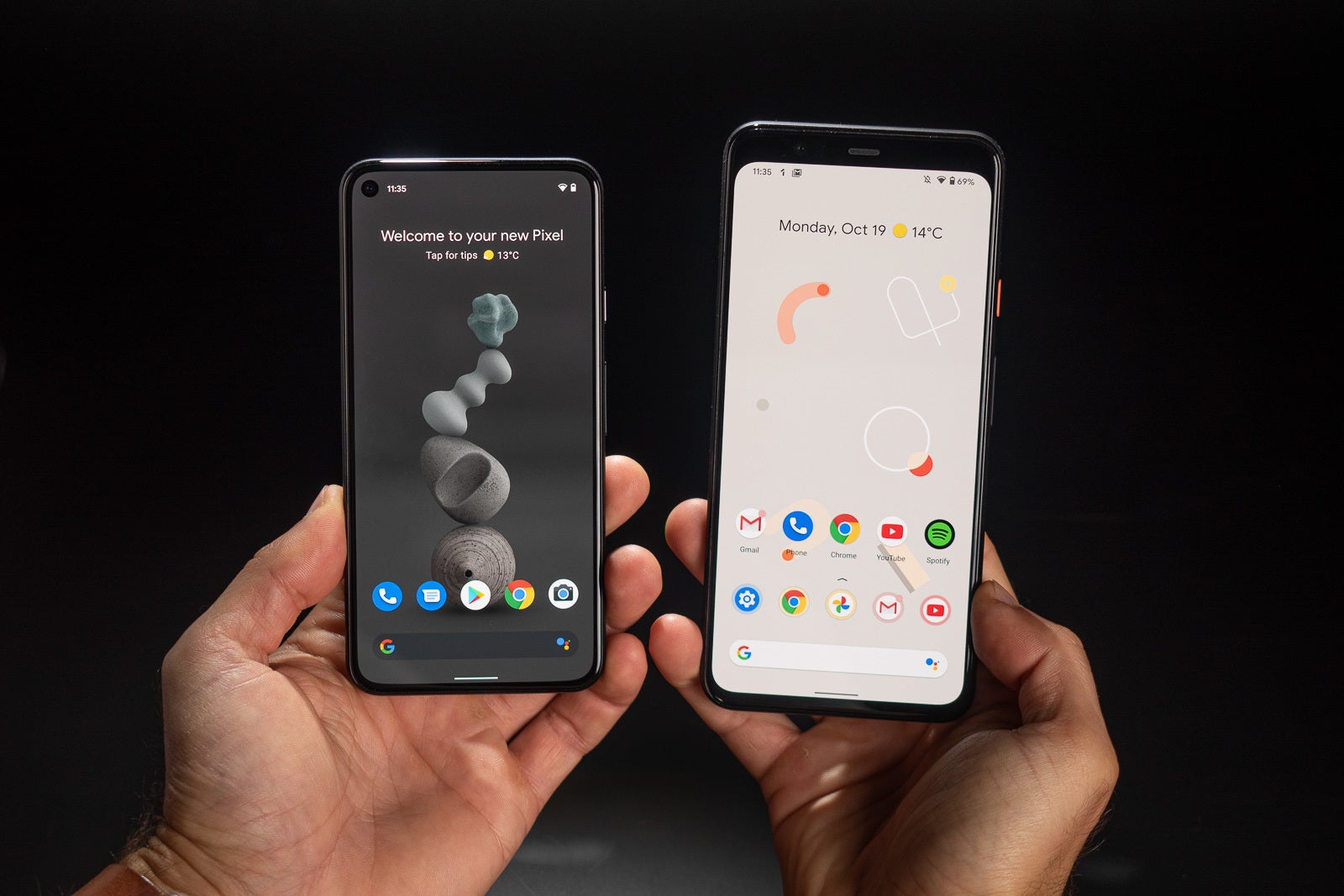
The main difference between the back of the two phones is directly related to the reduced bezel on the front. Since it housed the biometrics authentication on the Pixel 4, now that role has to be fulfilled by something else, which is our old friend the rear fingerprint sensor. Fast and reliable, many will be happy to see it rather than an under-display one.
The back panel might look similar, but there's one big change made to the Pixel 5. While the Pixel 4 has a Gorilla Glass back, the Pixel 5 has an aluminum body. And even with it, Google has managed to retain wireless charging. Overall, the new Pixel 5 is the logical next step in terms of design and still very much Google-like.
Pixel 5 vs Pixel 4 XL: design comparison

Google’s design is unique in its simplicity. Straying away from shiny finishes and colors with whimsical names, the Pixel phones have had an understated look since day one. The biggest sign of extravagance is usually the colored power button and that says a lot.

The main difference between the back of the two phones is directly related to the reduced bezel on the front. Since it housed the biometrics authentication on the Pixel 4, now that role has to be fulfilled by something else, which is our old friend the rear fingerprint sensor. Fast and reliable, many will be happy to see it rather than an under-display one.
Oh, one last thing, this year there's no Pixel 5 XL, instead the Pixel 5 splits the difference between the Pixel 4 and the Pixel 4 XL when it comes to display size.
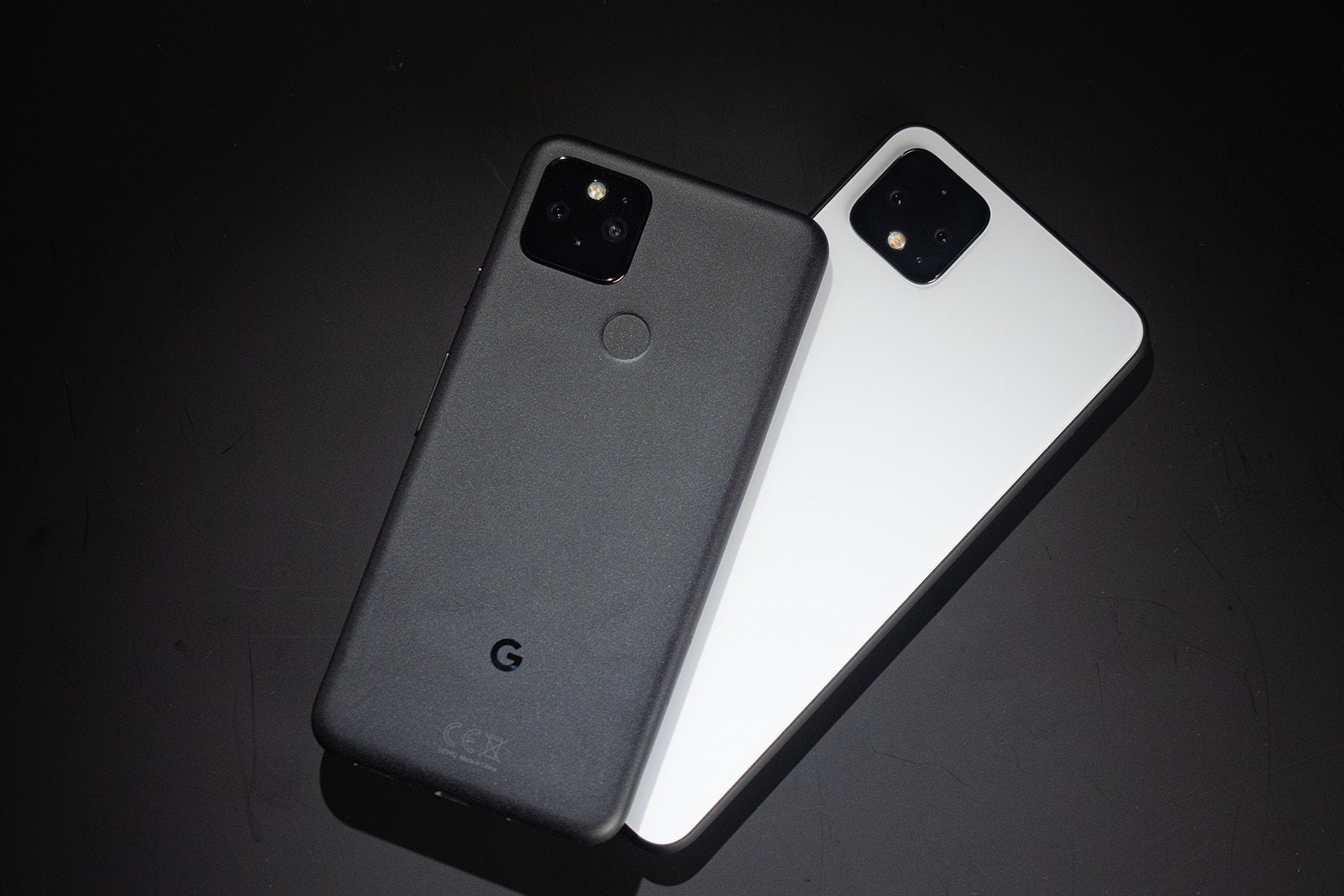
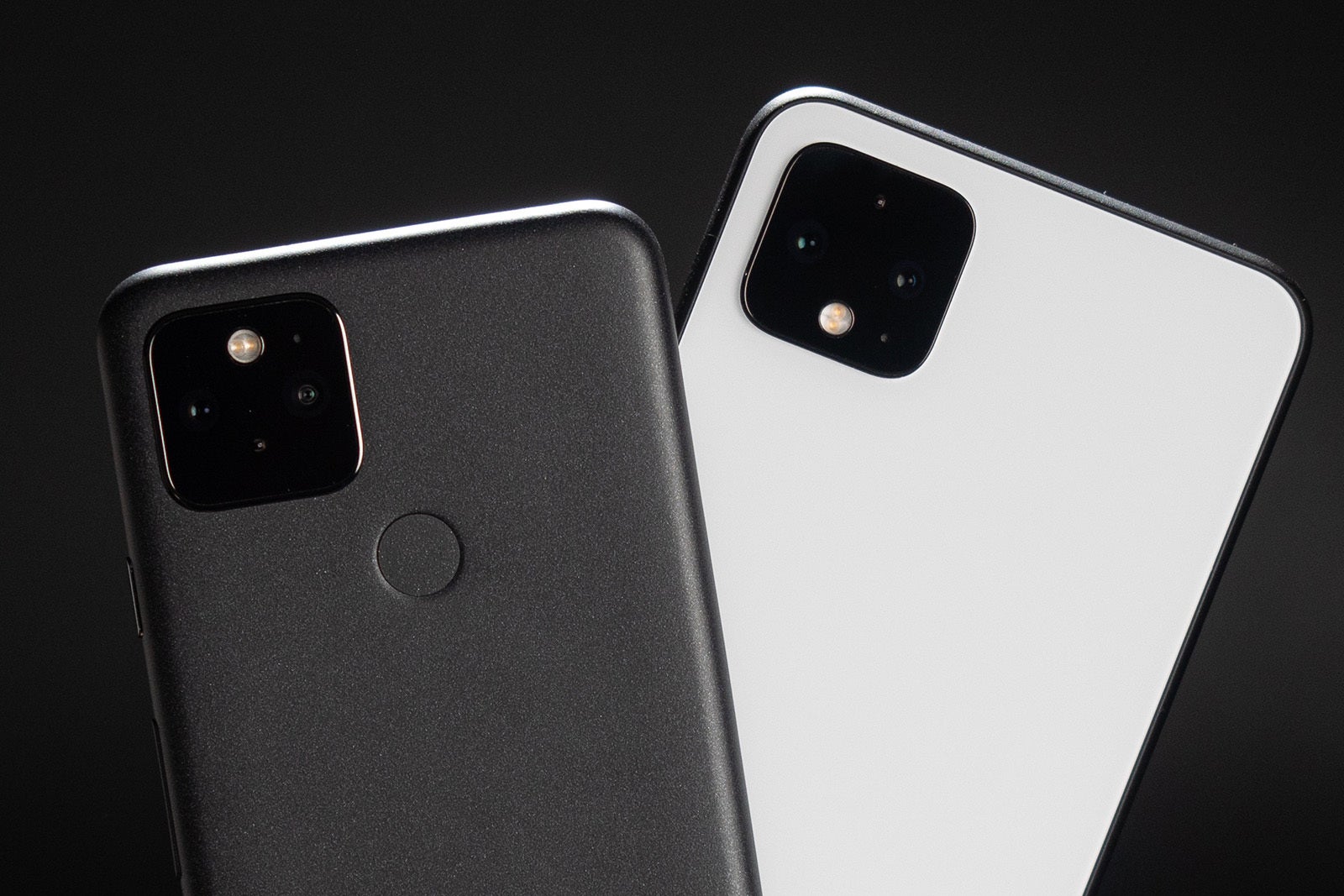
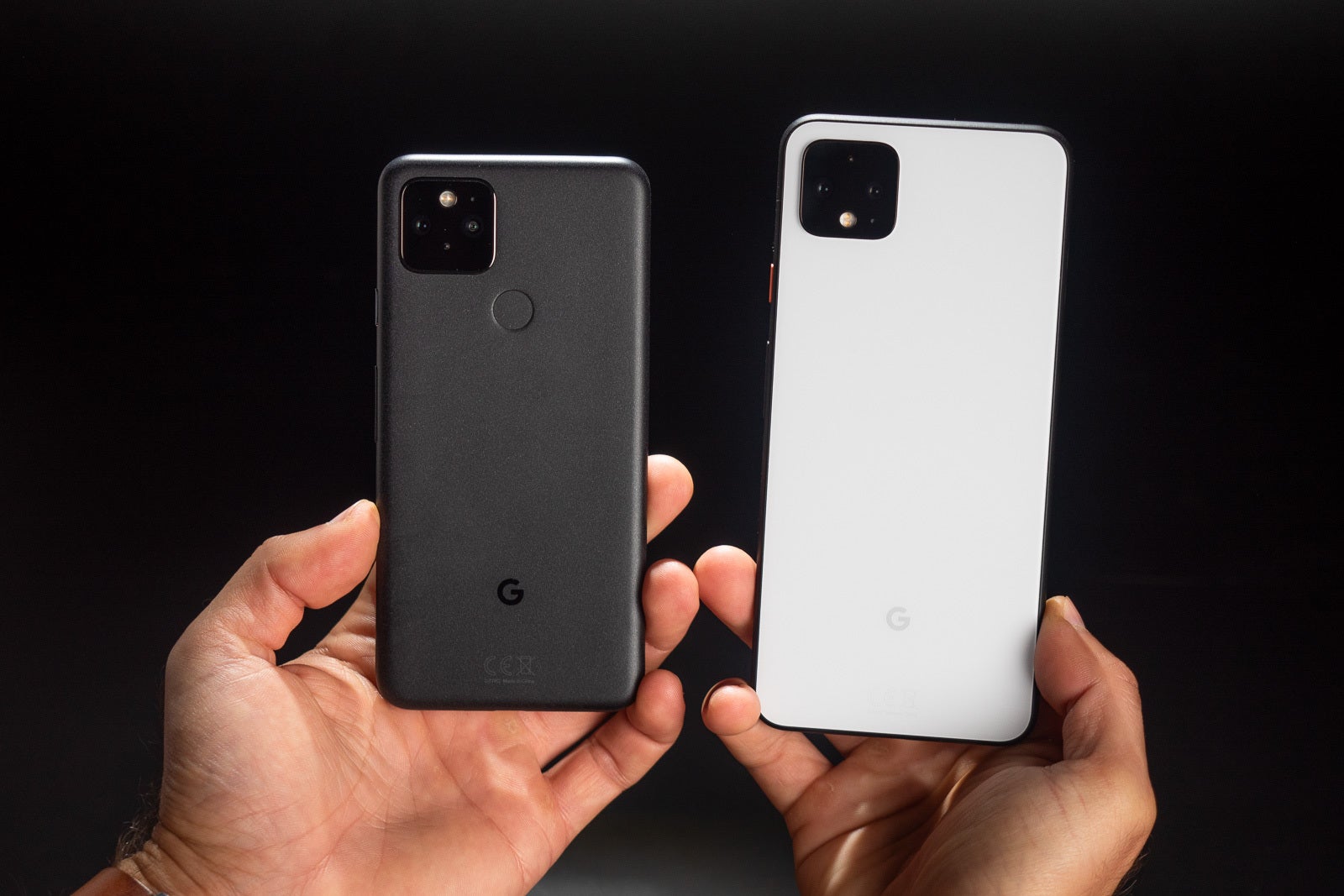
Pixel 5 vs Pixel 4: specs comparison
No matter how well optimized the software is, specs are still a very important part of every smartphone. We already hinted about the new direction of the Pixel line and what not to expect from the Pixel 5 when it comes to SoC, but now, let's get a deeper look.
|
|
|
|
| Google Pixel 5 | Google Pixel 4 | Google Pixel 4 XL |
| Size | ||
|---|---|---|
| 6.0-inch, 86.75% screen-to-body | 5.7-inch, 77.32% screen-to-body | 6.3-inch, 82.21% screen-to-body |
| Type | ||
| OLED, 90Hz, HDR | OLED, 90Hz, HDR | OLED, 90Hz, HDR |
| Resolution | ||
| 2340x1080px, 19.5:9 ratio, 430 PPI | 2280x1080px, 19:9 ratio, 443 PPI | 3040x1440px, 19:9 ratio, 534 PPI |
| Protection | ||
| Corning Gorilla Glass 6 | Corning Gorilla Glass 5 | Corning Gorilla Glass 5 |
| System chip | ||
|---|---|---|
| Snapdragon 765G SM7250-AB (7 nm) | Snapdragon 855 SM8150 (7 nm) | Snapdragon 855 SM8150 (7 nm) |
| Processor | ||
| Octa-core 2400 MHz Kryo 475 |
Octa-core Kryo 485 | Octa-core Kryo 485 |
| GPU | ||
| Adreno 620 | Adreno 640 | Adreno 640 |
| Memory | ||
| 8GB (LPDDR4)/128GB (UFS 2.1) | 6GB (LPDDR4)/64GB 6GB/128GB | 6GB (LPDDR4)/64GB 6GB/128GB |
| Storage expansion | ||
| not expandable | not expandable | not expandable |
| OS | ||
| Android (12, 11) | Android (12, 11, 10) | Android (12, 11, 10) |
| Type | ||
|---|---|---|
| 4080 mAh | 2800 mAh | 3700 mAh |
| Charging | ||
| USB Power Delivery Qi wireless charging, Reverse wireless charging |
USB Power Delivery Qi wireless charging | USB Power Delivery Qi wireless charging |
| Charge speed | ||
| Wired: 18.0W Wireless: 18.0W |
||
| Rear | ||
|---|---|---|
| Dual camera | Dual camera | Dual camera |
| Main camera | ||
| 12.2 MP (OIS, PDAF) Aperture size: F1.7 Focal length: 28 mm Sensor size: 1/2.55" Pixel size: 1.4 μm | 12.2 MP (OIS, PDAF) Aperture size: F1.7 Focal length: 28 mm Sensor size: 1/2.55" Pixel size: 1.4 μm | 12.2 MP (OIS, PDAF) Aperture size: F1.7 Focal length: 28 mm Sensor size: 1/2.55" Pixel size: 1.4 μm |
| Second camera | ||
| 16 MP (Ultra-wide) Aperture size: F2.2 Pixel size: 1 μm | 16 MP (Telephoto, OIS, PDAF) Aperture size: F2.4 Focal Length: 45 mm Pixel size: 1 μm | 16 MP (Telephoto, OIS, PDAF) Aperture size: F2.4 Focal Length: 45 mm Pixel size: 1 μm |
| Flash | ||
| LED | Dual LED | Dual LED |
| Video recording | ||
| 4K UHD (60 fps), 1080p (240 fps) Time-lapse video, EIS | 4K UHD (30 fps), 1080p (120 fps), 720p (240 fps) OIS, Time-lapse video, EIS | 4K UHD (30 fps), 1080p (120 fps), 720p (240 fps) OIS, Time-lapse video, EIS |
| Front | ||
| 8 MP Video capture: 1080p | 8 MP (Dual-Camera, Time-of-Flight (ToF)) Video capture: 1080p | 8 MP (Time-of-Flight (ToF)) Video capture: 1080p |
| Bluetooth | ||
|---|---|---|
| 5.0 | 5.0 | 5.0 |
| WLAN | ||
| a,b,g,n,ac,dual-band MIMO, Wi-Fi Direct, Hotspot 802.11 a, b, g, n, ac | a,b,g,n,ac,dual-band MIMO, Wi-Fi Direct, Hotspot 802.11 a, b, g, n, ac | a,b,g,n,ac,dual-band MIMO, Wi-Fi Direct, Hotspot 802.11 a, b, g, n, ac |
| USB | ||
| Type-C, USB 3.1 | Type-C, USB 3.1 | Type-C |
| Sensors | ||
| Accelerometer, Gyroscope, Compass, Barometer, Ambient light sensor, Proximity sensor | Accelerometer, Gyroscope, Compass, Barometer, Ambient light sensor, Proximity sensor | Accelerometer, Gyroscope, Compass, Barometer, Ambient light sensor, Proximity sensor |
| Hearing aid compatible | ||
| M4/T3 | M3/T3 | M3/T3 |
| Location | ||
| GPS, A-GPS, Glonass, Galileo, Cell ID, Wi-Fi positioning | GPS, A-GPS, Glonass, Galileo, Cell ID, Wi-Fi positioning | GPS, A-GPS, Glonass, Galileo, Cell ID, Wi-Fi positioning |
| Other | ||
| NFC | NFC | NFC |
See the full
Google Pixel 5 vs Google Pixel 4 vs Google Pixel 4 XL specs comparison
or compare them to other phones using our
Phone Comparison tool
So, let's talk about the elephant in the room, that Snapdragon 765G chipset. Yes, for the first time, Google isn't using the latest 800-series Snapdragon for its premium line. That's not a precedent either, LG did the same this year with the Velvet. But why the sudden change? Well, there are a few factors. Phone makers have mentioned time and time again that the Snapdragon 865 is a particularly expensive chip. That means they have to either increase prices or lower their profit margins. Either is far from ideal.
But perhaps more importantly, mobile chips have reached a high level of refinement. The technology is mature enough to give even midrange chips plenty of performance for the majority of users, to the point where the advantages of the Snapdragon 865 become obvious in a few niche cases. Qualcomm made a great all-around chip in the form of the Snapdragon 765G, striking a balance between performance, power efficiency, features and price. Which is why so many phones are using it already.
Compared to the Snapdragon 855 in the Pixel 4, the 765G is slightly slower in some tasks but manages to match the performance in other. If you're rocking one of last year's flagships, the Pixel 5 is probably not for you.

That being said, you shouldn't be disappointed that the Pixel 5 lacks a Snapdragon 865. Pixels were never topping benchmark charts anyway, there are other phones to look towards if you need peak performance. And even without the top tier chip, you'll still get 5G connectivity, you know, for the sake of futureproofness. It will come with mmWave capability as well, in case you were wondering, but those models might remain exclusive to Verizon.
The disappearance of the radar tech known as Project Soli from the Pixel 5 also deserves a mention. You know, the one that lets you wave your hands above your phone hoping something will happen. Google gave it a shot, it didn't live up to the expectations and it seems that was enough to get the axe. It will hardly be missed.
A quick look at the rest of the specs lets us know that the usual upgrades are in place: more storage, more RAM, larger battery. Just like it should be. The larger battery comes paired with a brand new feature. At least new for the Pixel line. Reverse wireless charging. Yes, you can use the Pixel 5 to charge other devices wirelessly. It's a cool feature to have but hardly one that would push people to upgrade.
Now for the most important part of every Pixel phone, the camera...
Pixel 5 vs Pixel 4 XL: camera comparison

Once again, Google sticks to its favorite 12MP main sensor. It used it for the Pixel 4 and now it's in the Pixel 5 as well. That seems disappointing considering most manufacturers have moved to 48, 64, or even 108MP, but it makes sense when you think about Google's approach towards cameras. Pixels rely heavily on the computational side of smartphone photography, which means a jump in the pixel count will put a massive strain on the chip. And as we made it clear already, the new Pixel won't have an abundance of performance to throw around. With that in mind, we expect a pretty similar performance between the two phones when it comes to image quality. Still, we'll have to wait until we get our hands on the Pixel 5 to test them shoulder to shoulder in the real world.
One major difference between the Pixel 5 and the Pixel 4 in the camera department is the change of secondary cameras. What was a telephoto camera in the Pixel 4 is now an ultra-wide-angle camera in the Pixel 5. Last year, Google made sure to explain why it thought telephoto was the way to go instead of ultra-wide, but that now seems to be forgotten and with the new camera you can "capture more". There's not much more to say on this matter, by now everyone is familiar with ultra-wide-angle cameras, other phones have had them for years.
When it comes to software features, there aren't any differences between the two models. With hardware so similar, there's hardly anything that can give the Pixel 5 an edge. Whatever Google Camera version the Pixel 5 comes with will likely be on the Pixel 4 as well soon enough. And on most other Pixel phones as well.
Conclusion

While usually, it's safe to say that the latest model is not meant for people that have the previous one, in the case of the Pixel 5 that's doubly true. Right now, there's almost no reason to get the Pixel 5 if you're using the Pixel 4 or 4 XL. But if you're switching from an older device, especially one that's not from the Pixel line, then the Pixel 5 is a very tempting offer. The best software that Google has to offer with a decent specs sheet and a reasonable price? Sounds like a pretty good deal.
Google is shifting away from the premium segment and towards the mid-range and that might be for the best. The Pixel 5 and the other new Google phone, the Pixel 4a 5G, will likely reach a wider audience than before, which will ultimately benefit Google. That seems to be the plan, at least, now we just have to wait and see how it plays out.
Follow us on Google News





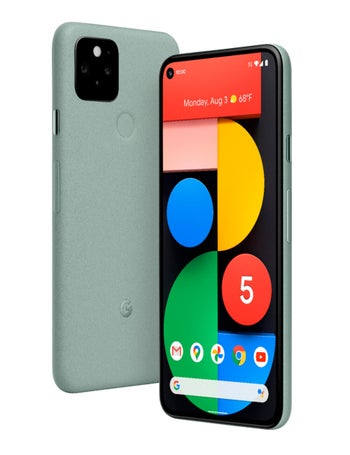
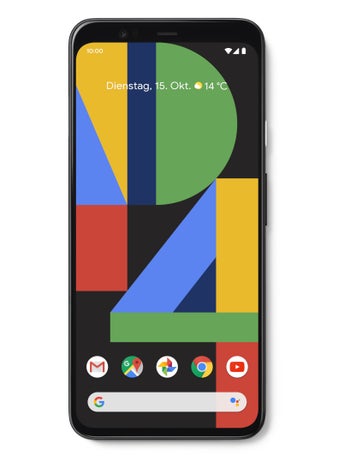
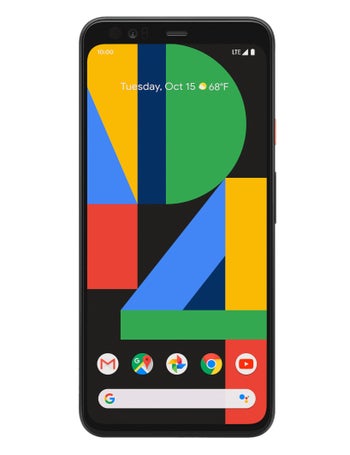














Things that are NOT allowed:
To help keep our community safe and free from spam, we apply temporary limits to newly created accounts: